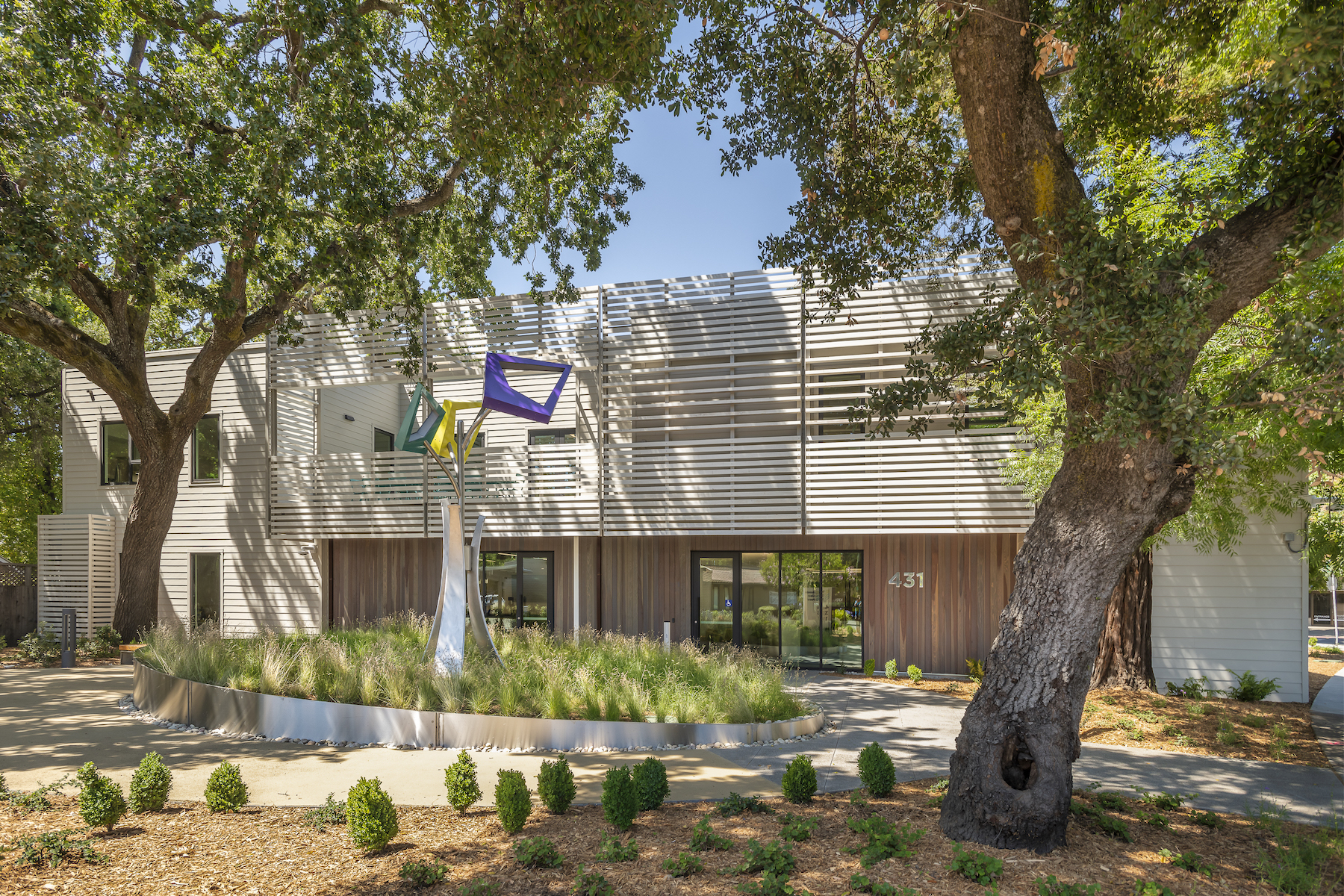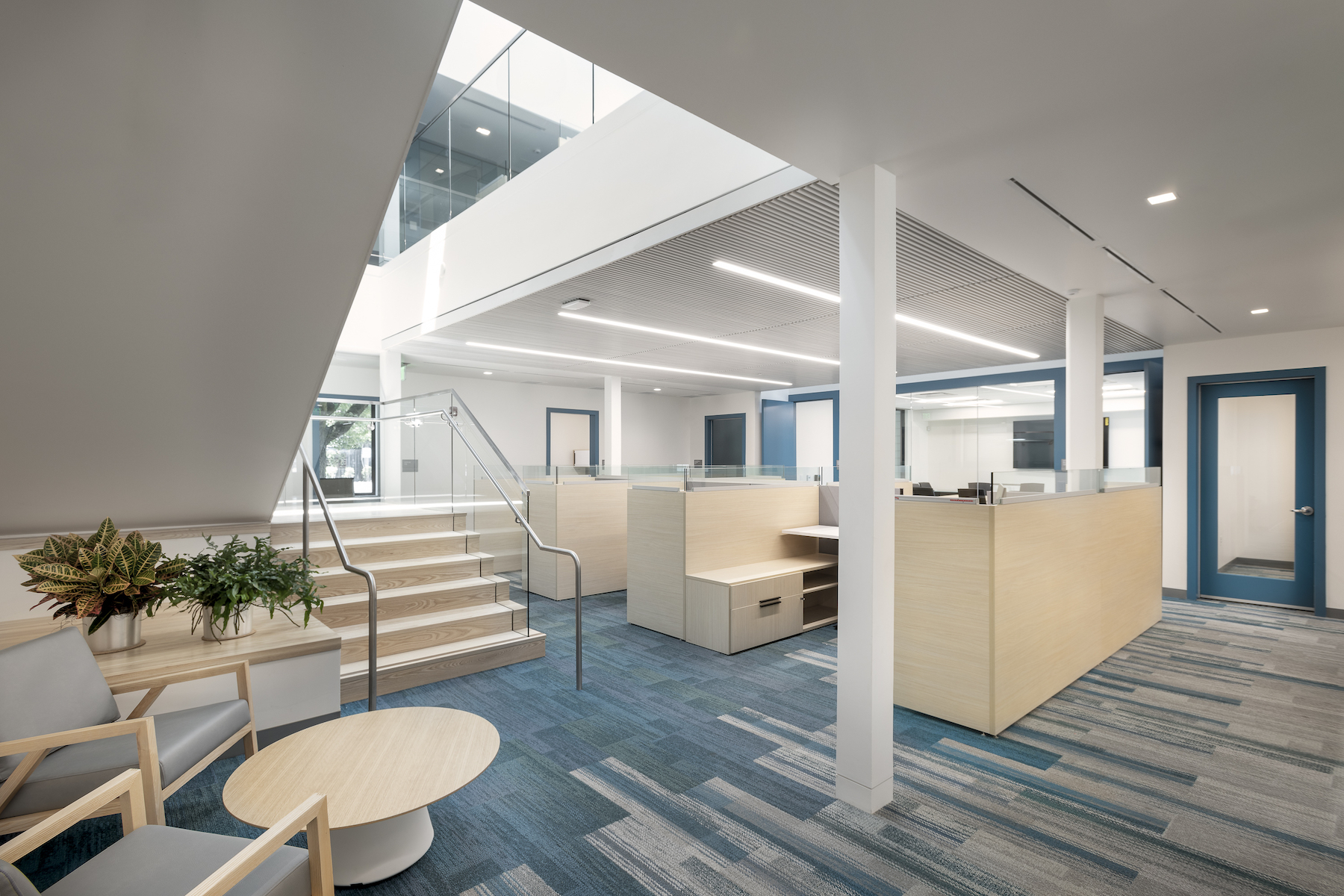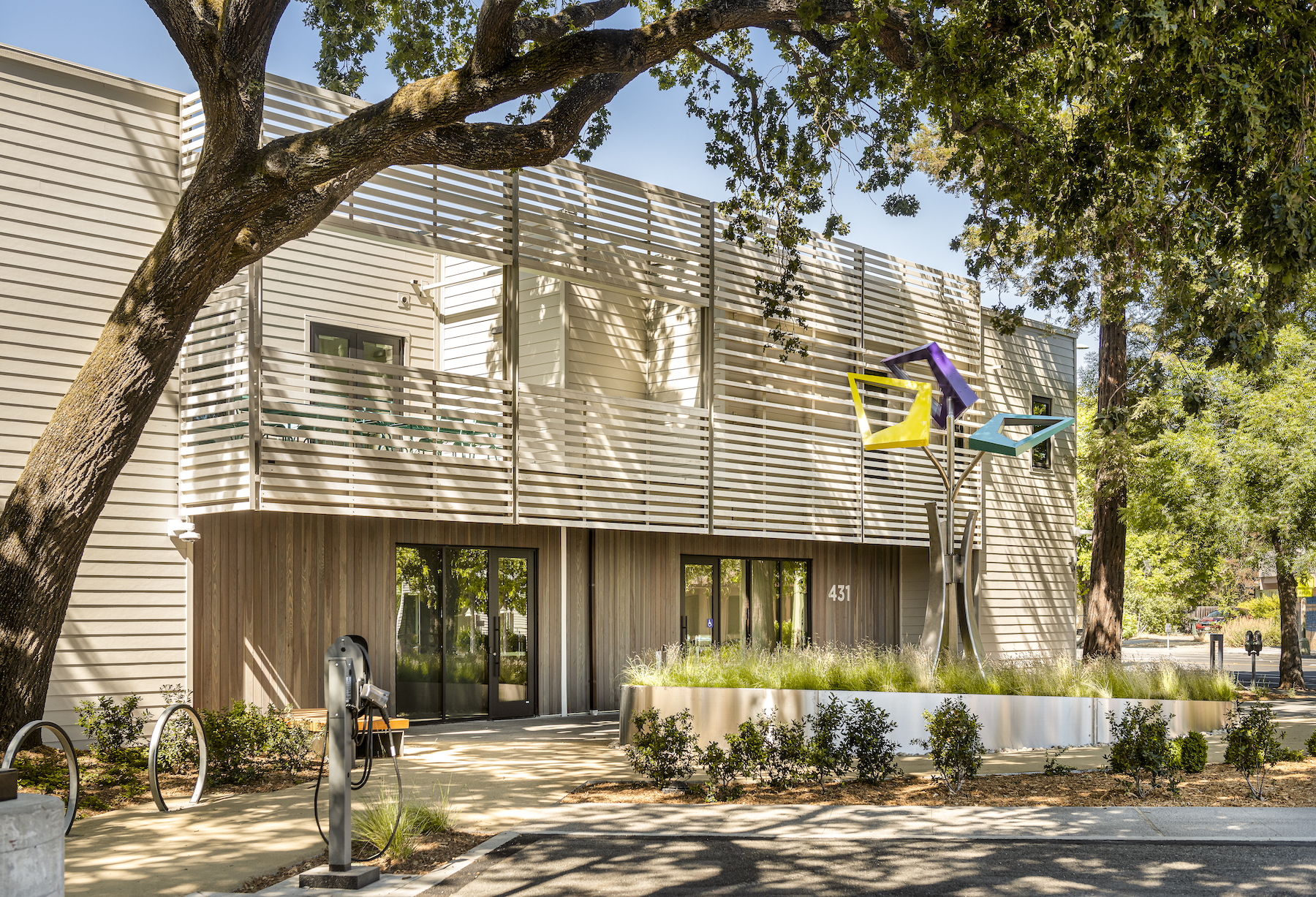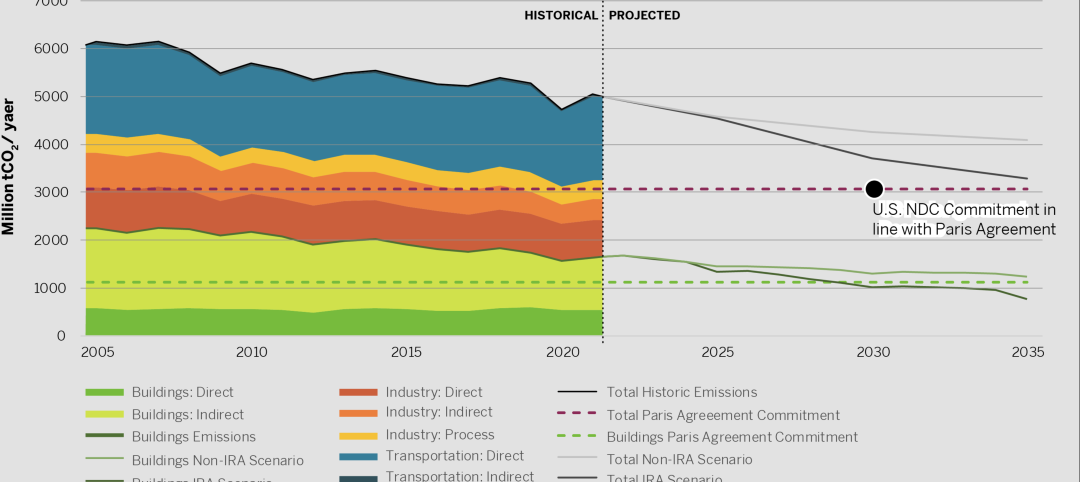Sonoma Clean Power (SCP), the public power provider for California’s Sonoma and Mendocino Counties, recently unveiled its new all-electric headquarters. Billed as the world’s first GridOptimal building, the project features an innovative microgrid and intends to go beyond net zero energy standards by reducing greenhouse gas emissions on the state’s electric grid.
Designed by EHDD Architecture, SCP’s new HQ is the initial pilot project for GridOptimal® Buildings Initiative, a joint program of the New Buildings Institute and the U.S. Green Building Council. The program aims to redefine how building design and operations can cost-effectively decarbonize the power grid and support a fully renewable electricity supply.
In Santa Rosa, Calif., the two-year renovation turned a 1979 structure into a building that enables decarbonization of the grid. The all-electric building is powered partially by an on-site solar array, with the rest coming from SCP’s completely renewable and locally generated EverGreen service. The building’s lights, HVAC, water heating, and 23 electric car chargers all draw from the grid only when California has plenty of clean power available. Typically, the battery system charges up midday, when there is abundant solar power. In the evening, the building can use that energy or place it back onto the grid, reducing the reliance on gas power plants.
“Our new headquarters is a ‘test case’ that’s working well, and we want people to know that this can be replicated — that clean electricity and decarbonization are attainable today. We also want people to understand that a 24/7 zero-emissions future for buildings is achievable and practical,” Geof Syphers, CEO, Sonoma Clean Power, said in a statement.
Design began in 2018, with construction completed in 2021. The microgrid installation was finished this year.
On the Building Team:
Owner and developer: Sonoma Clean Power
Design architect: EHDD Architecture
Architect of record: EHDD Architecture
MEP engineer: Guttmann & Blaevoet, with support from Point Energy Innovations
Structural engineer: ZFA Structural Engineers
General contractor: Midstate Construction
Construction manager: Sixth Dimension


Related Stories
Green | Dec 11, 2023
U.S. has tools to meet commercial building sector decarbonization goals early
The U.S. has the tools to reduce commercial building-related emissions to reach target goals in 2029, earlier than what it committed to when it signed the Paris Agreement, according to a report by the U.S. Green Building Council.
Industry Research | Dec 9, 2023
Two new reports provide guidance for choosing healthier building products
The authors, Perkins&Will and the Healthy Building Network, home in on drywall, flooring, and insulation.The authors, Perkins&Will and the Healthy Building Network, home in on drywall, flooring, and insulation.
University Buildings | Dec 8, 2023
Yale University breaks ground on nation's largest Living Building student housing complex
A groundbreaking on Oct. 11 kicked off a project aiming to construct the largest Living Building Challenge-certified residence on a university campus. The Living Village, a 45,000 sf home for Yale University Divinity School graduate students, “will make an ecological statement about the need to build in harmony with the natural world while training students to become ‘apostles of the environment’,” according to Bruner/Cott, which is leading the design team that includes Höweler + Yoon Architecture and Andropogon Associates.
Industrial Facilities | Nov 14, 2023
Some AEC firms are plugging into EV charging market
Decentralized electrical distribution is broadening recharger installation to several building types.
Sustainability | Nov 1, 2023
Researchers create building air leakage detection system using a camera in real time
Researchers at the U.S. Department of Energy’s Oak Ridge National Laboratory have developed a system that uses a camera to detect air leakage from buildings in real time.
Sustainability | Nov 1, 2023
Tool identifies financial incentives for decarbonizing heavy industry, transportation projects
Rocky Mountain Institute (RMI) has released a tool to identify financial incentives to help developers, industrial companies, and investors find financial incentives for heavy industry and transport projects.
Codes and Standards | Oct 10, 2023
Green Seal will not certify any paints, coatings, floor care products containing PFAS
Green Seal will no longer certify any paints and coatings, floor care products, adhesives, and degreasers containing any per- and polyfluoroalkyl substances (PFAS), commonly called “forever chemicals.”
Metals | Sep 11, 2023
Best practices guide for air leakage testing for metal building systems released
The Metal Building Manufacturers Association (MBMA) released a new guidebook, Metal Building Systems - Best Practices to Comply with Whole-Building Air Leakage Testing Requirements.
Office Buildings | Aug 31, 2023
About 11% of U.S. office buildings could be suitable for green office-to-residential conversions
A National Bureau of Economic Research working paper from researchers at New York University and Columbia Business School indicates that about 11% of U.S. office buildings may be suitable for conversion to green multifamily properties.
Multifamily Housing | Aug 23, 2023
Constructing multifamily housing buildings to Passive House standards can be done at cost parity
All-electric multi-family Passive House projects can be built at the same cost or close to the same cost as conventionally designed buildings, according to a report by the Passive House Network. The report included a survey of 45 multi-family Passive House buildings in New York and Massachusetts in recent years.

















